Fiano wine, a versatile and aromatic white wine originating from Southern Italy, has been gaining popularity among wine enthusiasts worldwide. This ancient grape variety has a rich history, dating back to Roman times, when it was prized for its distinctive flavor profile and complexity. Over the centuries, Fiano has evolved to adapt to various terroirs, from the volcanic soils of the Campania region to the sun-kissed vineyards of new world wine regions.
Driven by a unique set of viticulture practices and vinification techniques, Fiano boasts a delightful mix of herbal, floral, and fruity notes. Typically, these wines showcase flavors like honey, pear, citrus, and hazelnut. Fiano wine’s age-worthy nature and food-friendly characteristics have made it a favorite of sommeliers and wine lovers alike, transcending its regional roots and securing a spot as a global wine star.

Key Takeaways
- Fiano wine has a rich history dating back to ancient Rome and is popular for its unique flavor profile.
- Specific viticulture practices and vinification techniques contribute to Fiano’s versatile and distinctive taste.
- With its aging potential and food-pairing possibilities, Fiano has gained international recognition and popularity.
Fiano: A Brief Overview
Fiano is a high-quality white grape variety originating from Southern Italy, specifically the Campania region. It is often considered one of the most distinguished Italian grapes and is highly esteemed for its unique characteristics and adaptability to various terroirs.

The Fiano grape has a long history, with roots tracing back to ancient Roman times. In fact, some historians believe that this grape variety was used to make a popular Roman wine called Apianum. As Fiano thrives in warm and sunny climates, it has found its place in various regions of Italy, from its native Campania to Sicily, Puglia, and beyond.
Fiano wines are characterized by their golden-yellow color and aromatic profile. When young, they exhibit notes of citrus, white flowers, pine, and honey. As the wine ages, these flavors evolve and expand, often developing hints of almonds, hazelnuts, and other nutty characters. The wine is typically medium to full-bodied with a good acidity, making it a versatile pairing for various types of food, from seafood and white meat dishes to fresh salads and pasta with creamy sauce.
In addition to its popularity as a single-varietal wine, Fiano is sometimes blended with other native Italian grape varieties to create interesting and complex white wine blends. These blends usually showcase the best qualities of each grape, offering different layers of aroma and flavor to create a balanced and harmonious wine.

Over the years, the Fiano grape has gained international recognition and has been planted beyond Italian borders. Winemakers in countries such as Australia and the United States have embraced this unique variety, further expanding its global reach and influence. As a result, Fiano is establishing its place among the top white wine varieties and continues to attract the interest of wine enthusiasts around the world.
Origins and Historical Significance
Fiano wine, an exquisite white variety, has a rich history dating back to ancient Roman times. It is believed to have originated in the Campania region of southern Italy, specifically in the Avellino province. The grape variety is known as Fiano di Avellino, which later received the prestigious Fiano di Avellino DOCG status, indicating the highest quality of this wine.

During Roman times, Fiano was often referred to as Apianum, a name inspired by its attractiveness to bees (apis in Latin). It is said that bees were drawn to the sweetness of the grapes. The vineyards of Colli di Lapio, a small village in the Irpinia district within Avellino, are considered the birthplace of Fiano wine.
Over the centuries, Fiano wine has become an emblematic symbol of Campania’s winemaking tradition. It is now produced in several areas across the region, including the Sannio and Taburno areas. The grape has also made its way to neighboring regions like Puglia, where it contributes to the production of Martina Franca DOC wines, as well as to other parts of the world.
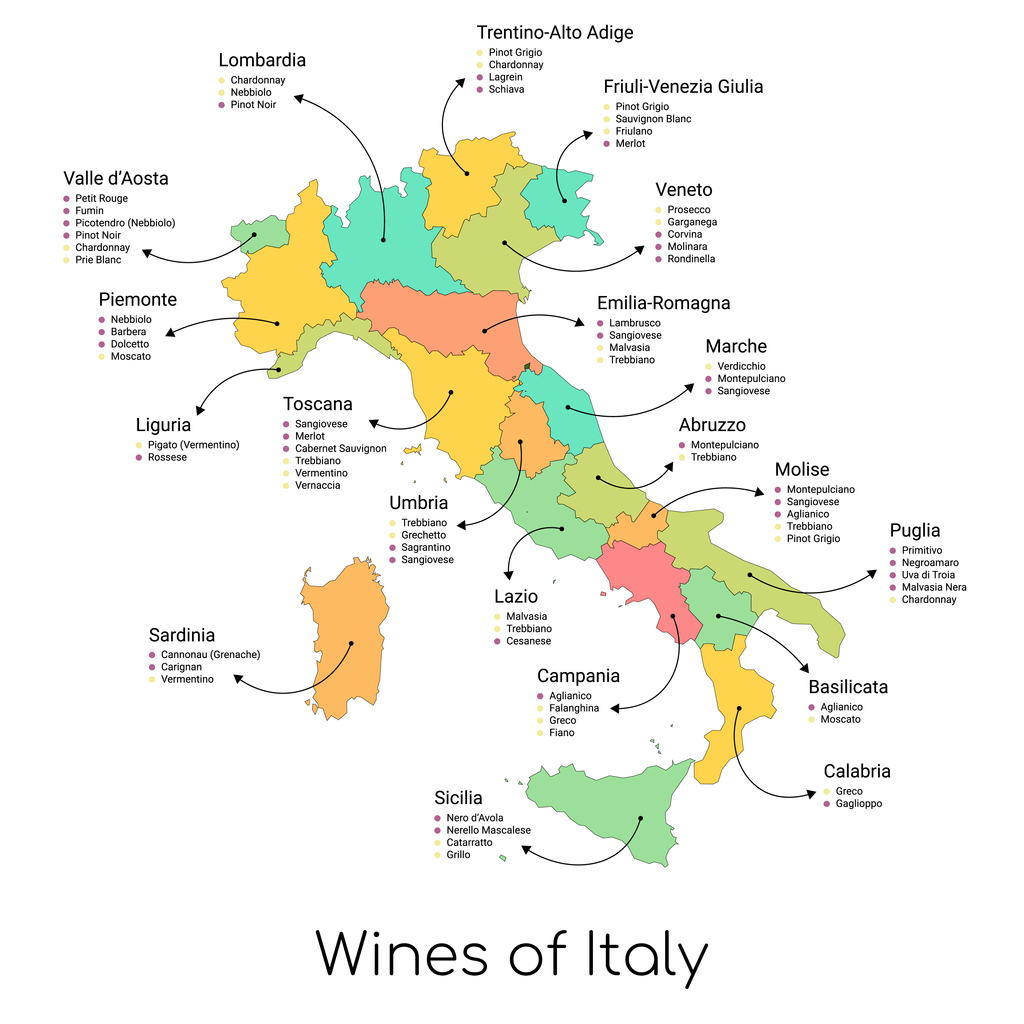
Fiano wine owes its modern-day success and popularity to diligent winemakers such as Feudi di San Gregorio and Ciro Picariello, who have played significant roles in reviving this ancient grape variety. Their efforts have earned Fiano a renowned reputation among wine enthusiasts who appreciate its unique taste and nostalgic ties to the past.

In summary, Fiano wine’s origins and historical significance lie in its association with the fertile vineyards of Campania, its ancient roots that date back to Roman times, and the dedicated winemakers who have championed its production. This captivating wine, with its intriguing history and distinguished flavor, continues to enthrall wine lovers worldwide.
Regional Specifications
Fiano is a white grape variety that is predominantly grown in the Campania region of Italy. This ancient grape has been cultivated in the region for centuries, particularly around the Apennine Mountains. The volcanic soils found in the area impart a distinct and unique quality to the wines. Fiano has also gained popularity in other regions across the globe, such as Australia, Argentina, and California.
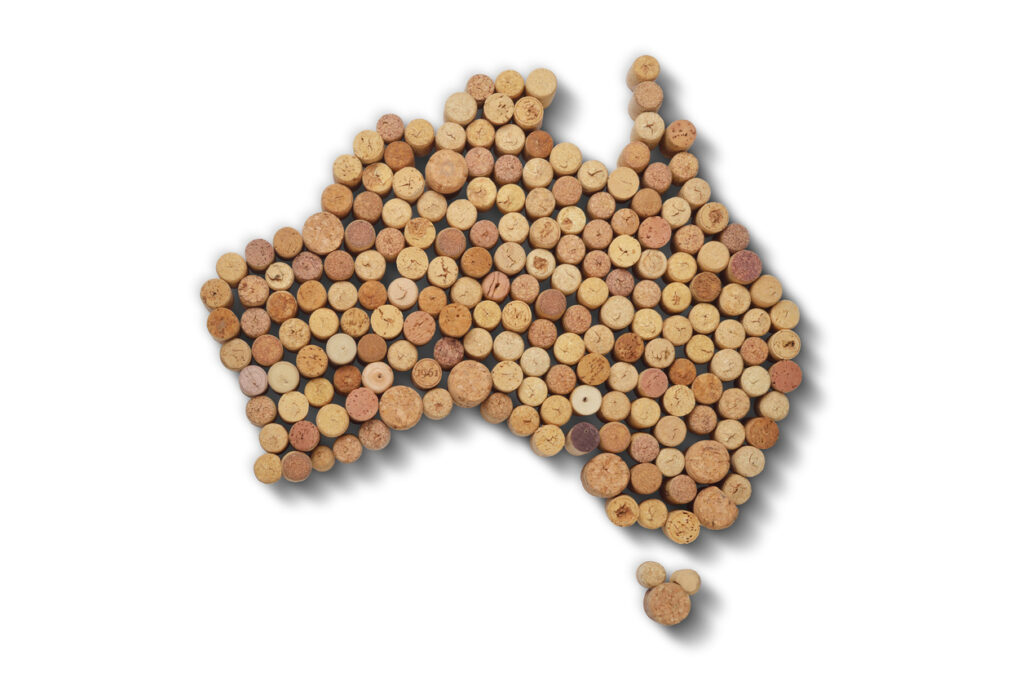
Cultivation of Fiano Grapes in Australia
In Australia, Fiano wine has experienced a surge in demand, and its cultivation has expanded to various regions. Among the Australian wine-growing areas, the McLaren Vale, Hunter Valley, and Adelaide Hills have gained a reputation for producing excellent Fiano wines. South Australia, in particular, has embraced this grape variety due to its adaptability to diverse soil and climate conditions.
In the Riverland region, Fiano has thrived and demonstrated its resilience in the face of extreme heat. The result is a wine that features tropical fruit flavors, showcasing the adaptability of this grape variety. Additionally, the volcanic soils in the Adelaide Hills contribute to a crisp and mineral-driven character in the wines produced there.

Argentina and Fiano Grapes
Across the ocean, Argentina has also experimented with Fiano cultivation in its diverse wine regions. Although the grape is still relatively rare against the backdrop of the country’s extensive wine industry, Fiano shows potential in Argentina, hinting at a bright future for this versatile variety.
Fiano in California
California, another wine region looking to expand its range of white grapes, has been exploring Fiano as well. Producers in the golden state have begun planting Fiano in smaller quantities, experimenting with its potential in their diverse terroirs.

Italy and Fiano Grapes
Lastly, Fiano has found its way back to Italy, where it has been planted in Sicily. The Sicilian terroir, with its mixture of mountains and volcanic soil, provides an ideal environment for Fiano. In this region, the grape yields wines with rich aromas and pronounced minerality.
Each of these regions offers a unique expression of Fiano, demonstrating the grape’s adaptability and the diverse characteristics it can bring to a wine. From the mineral-driven wines of Campania and Sicily to the tropical fruit nuances in Australian Fiano, the regional specifications make each wine a unique experience for the discerning palate.

Viticulture of Fiano
Fiano is a grape variety native to southern Italy, predominantly grown in the vineyards of Campania. It is well-known for its ability to produce high-quality white wines with complex aromas and flavors. Despite facing challenges such as low yields and susceptibility to disease, Fiano has shown resilience in viticulture and continues to gain popularity among wine enthusiasts.
Fiano Vinyards
In the vineyards where Fiano is cultivated, the grape variety thrives in the mineral-rich, volcanic soils found in the region. These conditions contribute to the distinctive taste and body of Fiano wines. The grapevines have a natural tendency to produce low yields, which can be a challenge for viticulturists. However, the smaller quantity often results in grapes of higher quality, with more concentrated flavors and acidity.
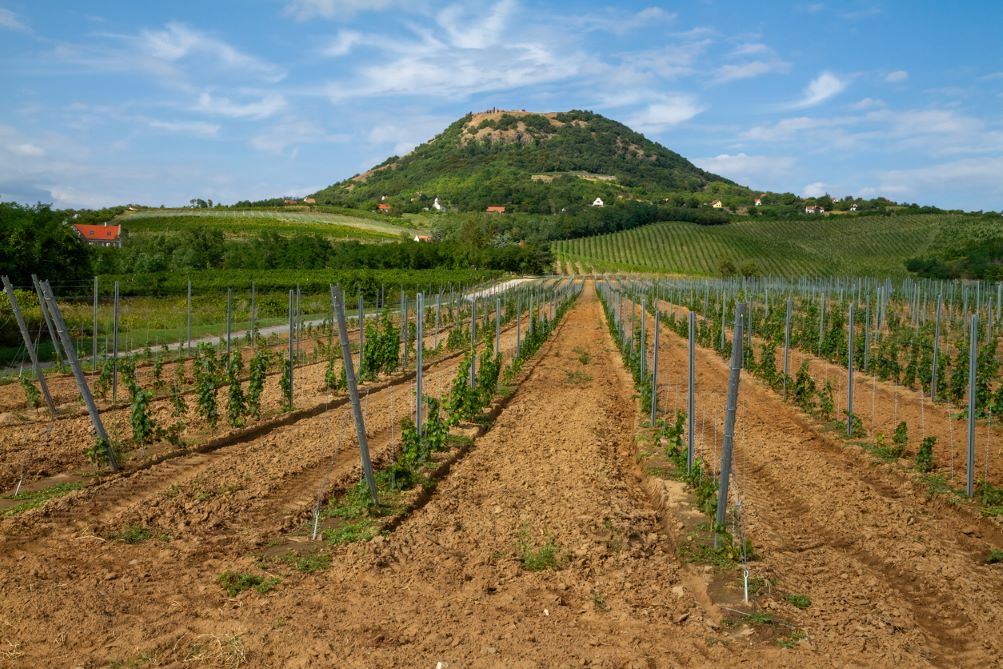
Vines – the Fiano Grape
Fiano’s low yields are partly due to its compact clusters and small berries. To ensure optimal growth, vineyard practices such as canopy management and crop thinning are crucial. These techniques help prevent disease by allowing better airflow and sunlight penetration, reducing the likelihood of fungal infections or rot. Additionally, the use of proper rootstock is important to protect the vines from pests and to encourage a strong, resistant root system.
Mildew and disease management for Fiano Grapes
Disease management is another vital aspect of Fiano viticulture. The grape variety is susceptible to certain diseases, including powdery mildew and botrytis, which can impact both the yield and quality of grapes. Vineyard managers must maintain a strict regimen of monitoring and treating the vines to prevent the spread of disease. This ensures the production of healthy, high-quality grapes that ultimately contribute to the complex, aromatic, and flavorful profile of Fiano wines.
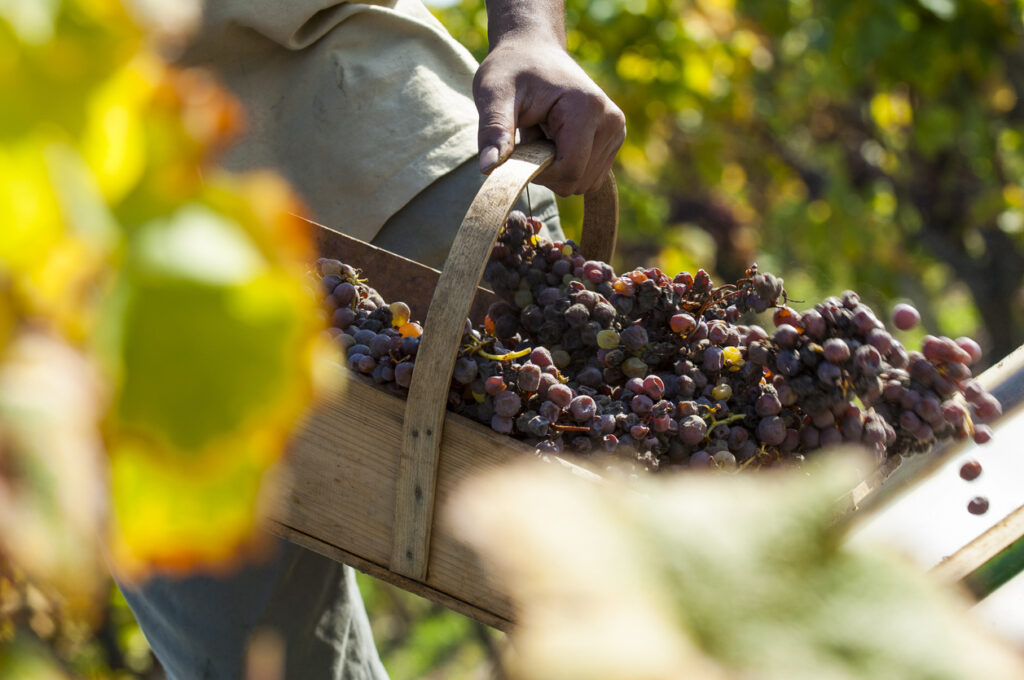
In conclusion, Fiano is a unique grape variety that demands particular attention and care in its cultivation. Despite the challenges of low yields and disease susceptibility, its resilience and adaptability have allowed it to flourish in the vineyards of southern Italy. The approach to viticulture plays a significant role in crafting the distinctive character of Fiano wine, resulting in a final product that is well-regarded by both experts and casual drinkers alike.
Vinification Techniques
Fiano wine benefits from various winemaking techniques that emphasize its unique characteristics. Winemakers take great care in handling the grapes throughout the process to ensure the final product is of exceptional quality.
One common technique employed in Fiano winemaking is the use of cold maceration. This process involves chilling the grapes before pressing, which can help to extract more delicate aromas and flavors from the grape skins. Cold maceration also aids in the stabilization of the wine’s color and results in a well-rounded, complex mouthfeel.
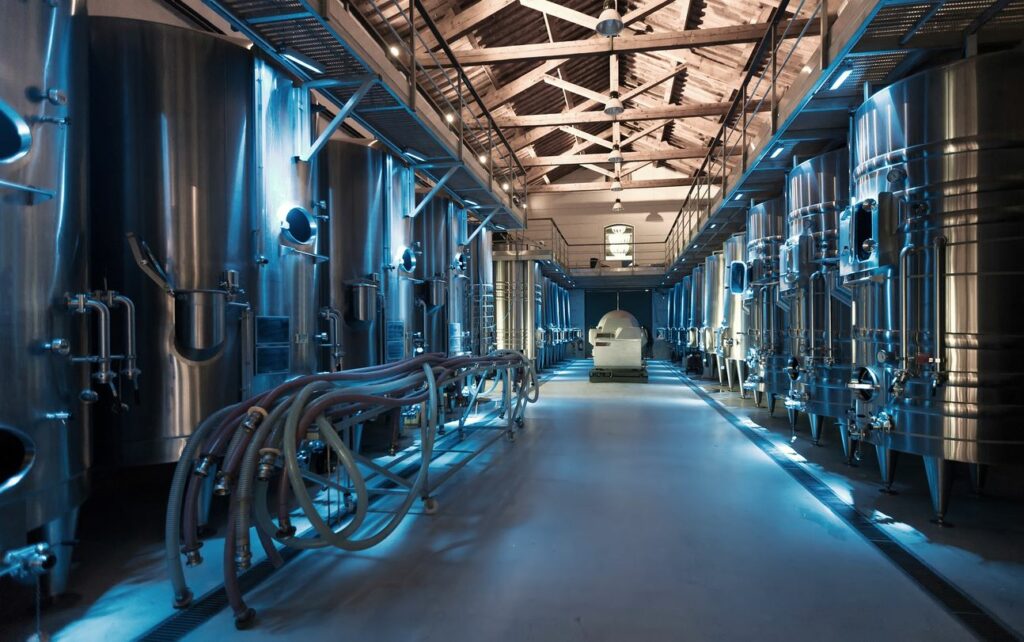
In the cellar, winemakers may also choose to utilize barrel fermentation or aging in oak barrels. This can help to add depth and complexity to the wine’s flavor profile, as well as contribute to its structure. However, it is essential to carefully manage the oak influence, as too much can overpower the delicate nuances of the Fiano grape’s terroir.
To best express the terroir in Fiano wines, some winemakers may opt for minimal intervention, allowing the wine to develop naturally and showcase the grape’s true essence. This can involve using natural yeasts, which are present on the grape skins, for fermentation.
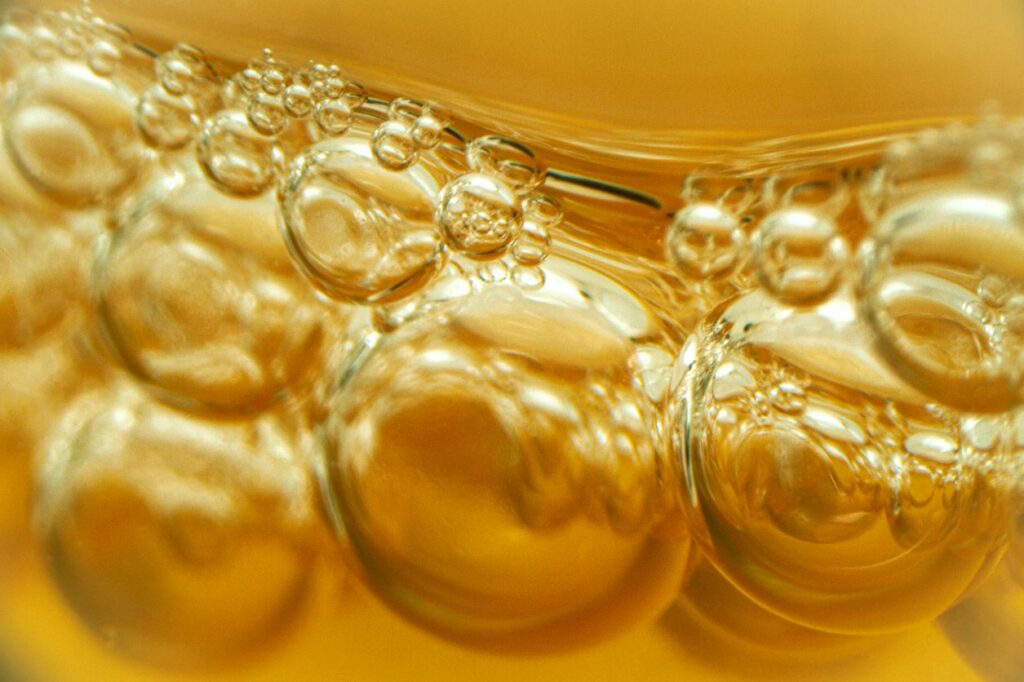
Careful temperature control is another crucial aspect of Fiano winemaking. This ensures that the fermentation proceeds at an optimal rate, preserving the bright, fruity aromas and flavors of the grape, while preventing the development of any undesirable characteristics.
In summary, Fiano winemaking techniques aim to highlight the grape’s unique qualities while coaxing out its subtle and complex characteristics. Winemakers must strike a delicate balance between preserving the grape’s purity and enhancing its inherent flavors, making for a truly exceptional wine.
Characteristics of Fiano Wine
Fiano is a white wine known for its dry nature and medium acidity. This wine is popular for its distinctive aromas and flavors, encompassing a range of fruit and nut characteristics. Often, Fiano wine features hazelnut notes that give it a unique nutty profile.

The taste of Fiano wine is heavily influenced by its terroir, which imparts fruit and secondary characteristics. Common fruit flavors found in Fiano include pear, citrus, tropical fruit, and stone fruit. These flavors mingle with the wine’s nuttiness and provide a well-rounded taste profile.
In addition to the fruit and nut tones, Fiano can exhibit some honey, pine, and spice elements, particularly in more mature bottles. These nuances add depth and complexity to the wine, without overpowering its primary characteristics. Acidity is present but balanced, leaving a refreshing impression on the palate.
The wine’s texture is also a point of interest, as it commonly has a slightly waxy mouthfeel. This waxy texture complements the nutty, fruity flavors and creates a lingering finish. Fiano wine’s medium acidity aids in balancing out the wine’s flavors and enhances its food pairing abilities.

In summary, Fiano wine is a versatile and flavorful choice with a profile that includes a harmonious blend of nutty, fruity, and secondary characteristics. Its medium acidity, waxy texture, and complex flavor profile make Fiano a unique and enjoyable white wine option.
Fiano in the New World
Fiano, a white grape variety originally from Italy, has found new homes in various regions across the globe. One notable location where Fiano has flourished is Australia. The McLaren Vale region of South Australia, particularly, boasts excellent vineyards producing fine Fiano wines.
Fiano in Australia
In the Adelaide Hills, esteemed wineries like Cherubino and Jericho are cultivating Fiano grapes and achieving remarkable results. The cooler climate in this area allows for a delicate balance between acidity and sweetness. This results in Fiano wines with a unique and captivating flavor profile.

Hunter Valley, another popular wine region in Australia, also demonstrates the versatility of Fiano. As the grape adapts well to different climates and soils, it’s no surprise that this fertile region has embraced its cultivation alongside popular varieties like Chardonnay and Pinot Gris.
California and Argentina
Outside of Australia, Fiano has also made its way into the vineyards of Argentina and California. These New World regions offer a distinctive terroir, which contributes to the unique expression of the Fiano grape.

The presence of bees in and around Fiano vineyards positively impacts the biodiversity in these wine regions. Bees play a crucial role in the pollination process, promoting healthy growth and better fruit quality.
Terroir and Fiano Wine
The diverse climates in which Fiano thrives, from the cooler Adelaide Hills to the sun-soaked lands of California, prove that this versatile grape is well-suited to adapt to a range of terroirs. As a result, Fiano wines produced in these New World regions exhibit a wide array of flavors and characteristics.
Oliver’s Taranga, one of the prominent wineries of South Australia, is another example of how the adaptation of Fiano has been successful. Their commitment to sustainable practices and a passion for grape varieties that suit the Australian climate have contributed to the flourishing of Fiano in this region.
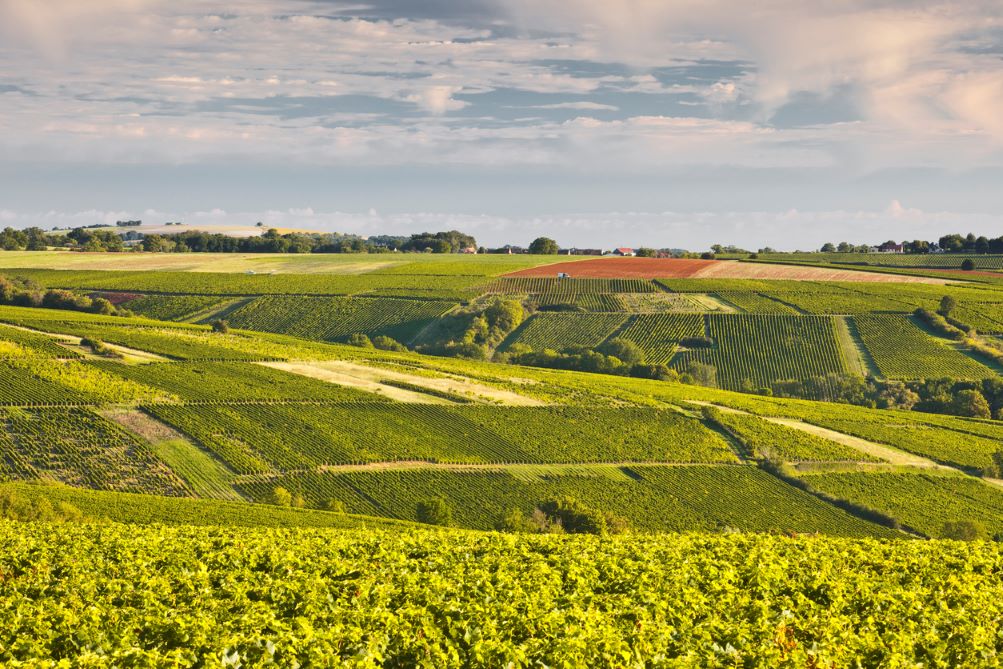
In conclusion, the Fiano grape has convincingly established itself in various New World wine regions. From Australia to Argentina to California. Its versatility, unique taste profile, and adaptability have garnered international acclaim. This led to its continued growth and prominence in the global wine industry.
Pairing Fiano with Food
Fiano, a versatile white wine originating from Southern Italy, is known for its ability to pair well with a variety of dishes. Its naturally high acidity and notes of honey, nuts, and tropical fruits make it a delightful choice for both light and hearty meals.
Seafood with Fiano Wine
Seafood dishes, such as grilled fish or shrimp, complement Fiano’s citrusy freshness. The wine’s acidity cuts through the richness of the dish, cleansing the palate and enhancing the flavors. A delightful pairing would be Fiano with a plate of freshly grilled calamari drizzled with lemon juice and olive oil.
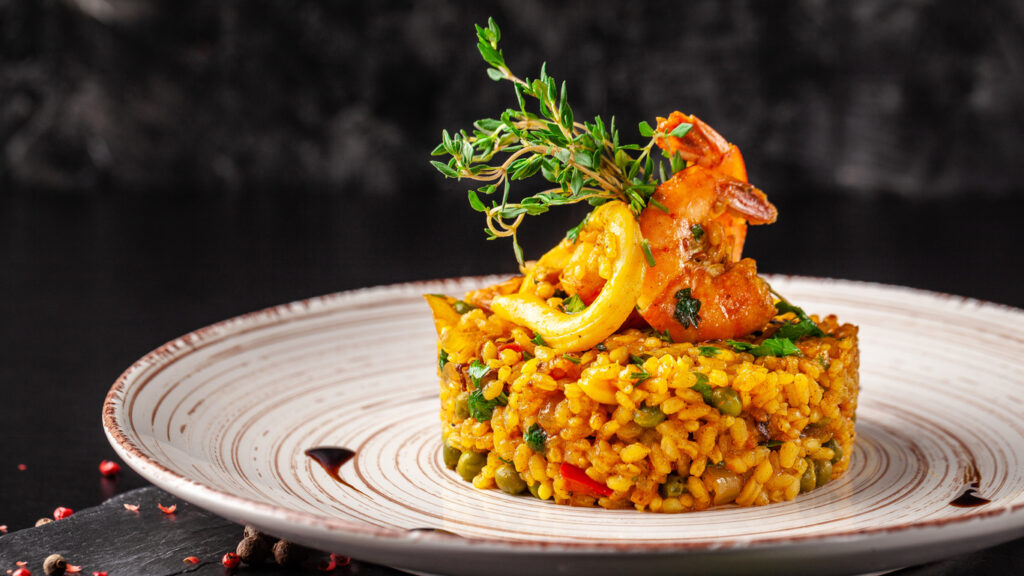
Fiano Wine with Pasta
Fiano’s nutty and honeyed characteristics make it suitable for pairing with creamy pasta dishes. For instance, a fettuccine Alfredo or a mushroom risotto would create a harmonious match. This balances the flavors of the dish and the wine. The wine’s light body ensures that it doesn’t overpower the dish while still providing a complementary taste experience.
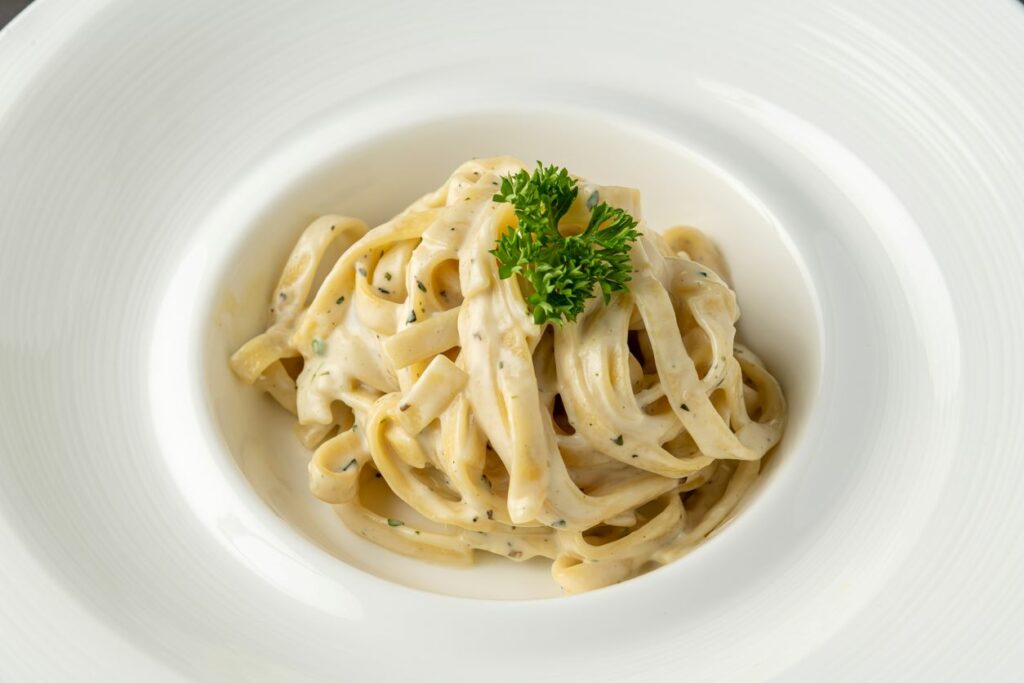
Pairing Cheese with Fiano Wine
For those who enjoy cheese, Fiano pairs well with an array of soft and medium cheeses. Examples include Brie, Camembert, and Gouda, as Fiano’s fruity and honeyed flavors create a striking yet balanced contrast. This pairing can be enjoyed as an appetizer or a dessert course, making it a crowd-pleaser for any dining occasion.
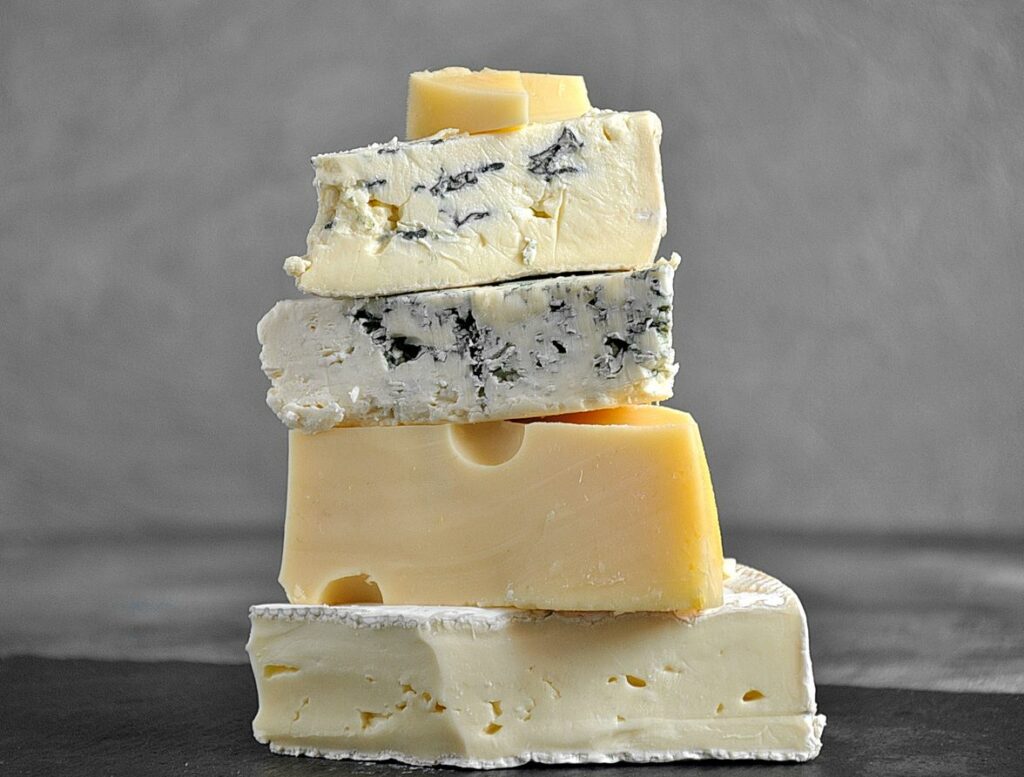
Fiano Wine and Meat
Lighter meat dishes also fare well with Fiano. Poultry, such as roast chicken or turkey, can benefit from the wine’s citrus and tropical fruit notes, which elevate the overall taste of the dish. For a more adventurous pairing, try Fiano with Asian cuisine. Choose dishes that feature a balance of savory, sweet, and sour flavors, such as a Thai green curry or a Vietnamese mango salad.

In conclusion, Fiano’s diverse flavor profile makes it an excellent choice for pairing with a wide array of dishes. Its versatility ensures that it will enhance and elevate the dining experience, regardless of the meal being served.
Aging and Cellaring Potential
Fiano wine has a reputation for its distinct aging potential. As it ages, it develops complex flavors, progressing from its initial floral and fruity notes to honey and nut characteristics over time. This transformation makes Fiano an ideal choice for those looking to explore the evolution of a wine’s character.
When it comes to cellaring, storing Fiano wines properly is crucial to maintain their quality and enhance their aging potential. The ideal cellar conditions for Fiano include a consistent temperature of around 55°F (13°C). Humidity levels need to be between 70 to 75 percent to prevent evaporation and maintain the integrity of the cork.

For optimal aging results, Fiano wines should be stored horizontally to keep the cork moist, ensuring a tight seal that prevents oxidation. It’s also essential to protect the wine from light exposure, as UV light can damage the wine’s flavor and aroma.
Fiano wines often reach their peak complexity and taste between 3 to 5 years after bottling. In some cases they can be aged for up to 10 years or more. This depends on the specific vintage and producer. As the wine ages, its acidity softens, and its flavors mature to reveal layers of depth and nuance.

When considering Fiano’s aging and cellaring potential, it is essential to remember that each vintage and producer may exhibit different characteristics. Factors such as vineyard location, grape quality, and winemaking techniques can impact how long a Fiano wine should be aged before consuming. It is always beneficial to consult the winery or a wine expert for specific recommendations on aging and cellaring windows.
By understanding Fiano’s aging and cellaring potential, wine enthusiasts can enjoy this versatile white wine in various stages of development. This allows them to appreciate the complex flavors revealed throughout its evolution.

Fiano’s Influence outside Italy
Fiano, a versatile white grape variety, has gained popularity and expanded beyond its Italian roots in recent years. It is now successfully grown in warm climates such as Australia’s McLaren Vale region. One notable winery contributing to Fiano’s widespread recognition is Coriole. They have embraced this grape variety and are producing delightful wines that showcase the characteristics of the grape.
The warm climate of Australia is particularly suitable for cultivating Fiano grapes. High daytime temperatures combined with cool nights create optimal growing conditions for the variety. These conditions enable the grapes to retain acidity while also developing the complex, fruity flavors that make Fiano unique.

In various winemaking regions outside Italy, Fiano is being blended with other grape varieties. It is also vinified as a single varietal wine. This approach allows local winemakers to experiment with Fiano’s unique characteristics. It results in a diverse range of wines that exhibit different profiles and nuances.
Fiano wines from non-Italian regions often exhibit tropical fruit notes,. These are pineapple, guava, and passionfruit, which are prominent in wines produced from warm climate areas like Australia. These tropical flavors are complemented by an undertone of almond and honeysuckle, which are hallmark traits of the Fiano grape.

As Fiano continues to gain momentum outside Italy, its potential for growth in warm climates is increasingly being recognized by winemakers worldwide. The success of wineries like Coriole in producing exceptional Fiano wines demonstrates that this ancient Italian grape variety has a promising future in the global wine industry.

